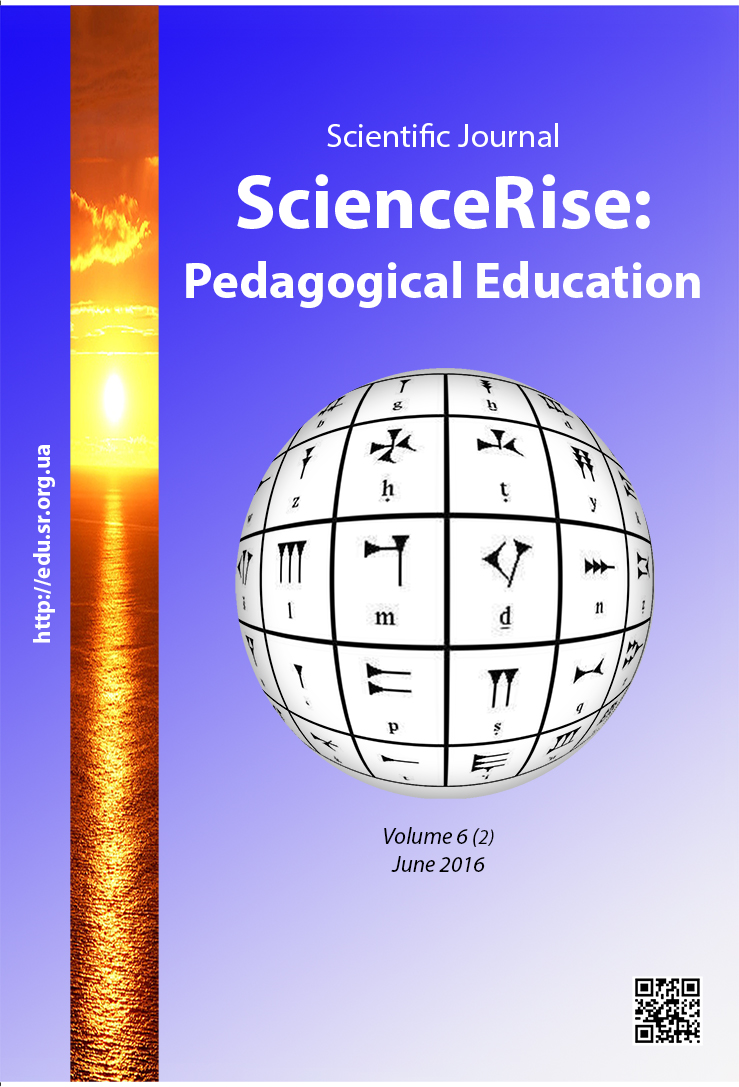Role of zoomorphic phraseologisms in formation of linguocultural content of language education of the future philologists
DOI:
https://doi.org/10.15587/2519-4984.2016.72053Keywords:
linguocultural aspect, zoomorphic phraseologisms in the content of language, communicative competence, eurointegrational approach, intercultural communicationAbstract
In the article is considered a possibility to raise the cultural level of speech skills and abilities of students (future teachers-philologists) with its further use within the multicultural space as an important mean of intercultural communication and competence approach using the phraseological fund of language. Taking into account the role of animals in the formation of speech content, we not only define the nationally-marking stereotypes but also find the common and different features in the phraseological system of the different languages that gives grounds for the study of both native and foreign language in the conditions of differentiated teaching for overcoming the difference between the two language systems.
The topicality of this problem is conditioned by the many-sided processes of modernization and eurointegration in the sphere of professional higher education, where the priority belongs to the study of languages as a mean of intercultural communication within the conversational-business speech. That is why the subject of our research is a ratio between zoomorphic phraseologisms of Ukrainian and English as one of the preconditions of the students’ communicative competenceReferences
- Zahalʹnojevropejsʹki Rekomendaciji z movnoji osvity: vyvchennja, navchannja, ocinjuvannja (2003). Kyiv: Lenvit, 273.
- Volkova, N. P. (2007). Pedahohika. Kyiv: Akademvydavnyctvo, 266–278.
- Karpjuk, O. (2005). Navchannja jak modelʹ uspishnoho zhyttja [Learning as a model of a successful life]. Inozemni movy v navchalʹnykh zakladax, 4, 86–94.
- Vdovin, V. V. (2007). Komunikatyvnyj pidxid jak optymalʹnyj zasib vyvchennja inozemnoji movy u VNZ. Lviv: Vydavnyctvo «Lʹvivsʹka politexnika», 15–20.
- Havrysh, I. V. (2009). Konceptualʹni zasady modernizaciji systemy pidhotovky majbutnix uchyteliv pochatkovoji shkoly [Conceptual foundations of modernization of the system of training of future primary school teachers]. Humanizatsija navchalʹno-vykhovnoho procesu. Slovjansʹk: SDPU, XIV, 9–12.
- Hudkov, D. B. (2003). Teoryja y praktyka mezhkulʹturnoj kommunykatsyy. Moscow: Prosve shchenye, 192.
- Stepanova, I. S. (2008). Realizatsija komunikatyvnoho pidkhodu do vykladannja inozemnykh mov u tekhnichnykh vyshakh [The implementation of the communicative approach to teaching foreign languages in technical universities]. Visnyk Vinnytskoho politekhnichnoho instytutu. 4, 150–153.
- Dobrovolʹsʹkyj, D. O. (1998). Nacyonalʹno-kulʹturnaja specyfyka frazeolohyy [National-cultural specificity of phraseology]. Voprosy` jaz y`koznanyja. Moscow: Nauka, 6, 48–76.
- Nazarenko O. V. (2001). Ukrajins`ka frazeolohija jak vyrazhennja nacional`noho mentalitetu [Ukrainian phraseology as an expression of the national mentality]. Dnipropetrovsk, 192.
- Pokrovskij, M. M. (1959). Izbrannye raboty po jazykoznanij. Moscow: Izdatel'stvo Akademii nauk SSSR, 381.
- Holubovsʹka, I. O. (2004). Etnospetsyfični konstanty movnoji svidomosti [Ethnospecific constants of the language of consciousness]. Kyiv, 38.
Downloads
Published
How to Cite
Issue
Section
License
Copyright (c) 2016 Світлана Іванівна Клименко

This work is licensed under a Creative Commons Attribution 4.0 International License.
Our journal abides by the Creative Commons CC BY copyright rights and permissions for open access journals.
Authors, who are published in this journal, agree to the following conditions:
1. The authors reserve the right to authorship of the work and pass the first publication right of this work to the journal under the terms of a Creative Commons CC BY, which allows others to freely distribute the published research with the obligatory reference to the authors of the original work and the first publication of the work in this journal.
2. The authors have the right to conclude separate supplement agreements that relate to non-exclusive work distribution in the form in which it has been published by the journal (for example, to upload the work to the online storage of the journal or publish it as part of a monograph), provided that the reference to the first publication of the work in this journal is included.








